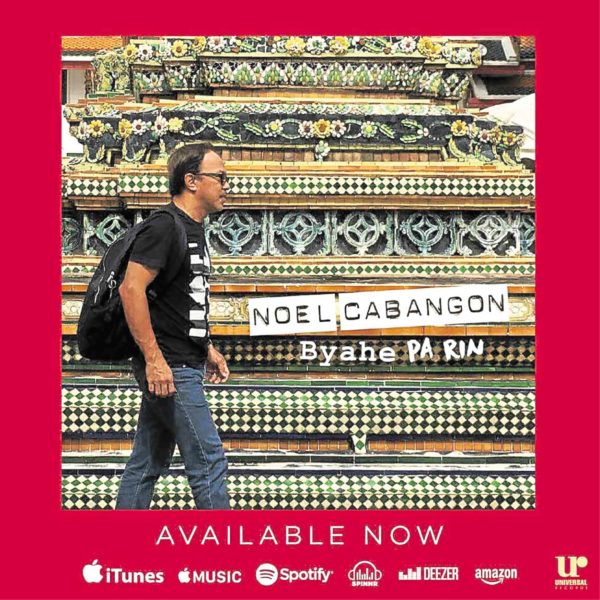Noel Cabangon explores new genres in latest ‘Byahe’ collection

Noel Cabangon
In covering a song, the goal is to try to make it his own, according to Noel Cabangon.
And while other artists—in an attempt to put their own flavor to already popular hits—end up changing or adding too much embellishments to the material, Noel prefers to keep things simple.
“My rule is to veer away from the original. I have to be creative in coming up with ways to render a song differently—the song has to sound new once the public hears it. Sometimes, I change the time signature or tempo,” the seasoned singer-songwriter said in a recent interview.
“Still, I prefer simple or minimal arrangements,” he added. “And I make my them as heartfelt as possible.”
This is the same principle Noel follows in recording his “Byahe” album series, which features his earnest and easy-listening takes on well-loved OPM songs.
But while the series’s first two installments, “Byahe” and “Tuloy ang Byahe,” were mostly acoustic and focused on 1970s and 1980s classics, the latest one “Byahe Pa Rin,” has a marked jazz influence and features more recent songs.
“I have always wanted to be a jazz singer, so there’s an effort to incorporate jazz into the new album and explore other genres,” he pointed out.
In “Byahe Pa Rin,” an 11-track record, Noel revives such songs as “Tadhana” by Up Dharma Down, “Ikaw” by Yeng Constantino, “Hari ng Sablay” by Sugarfree and “With a Smile” by Eraserheads—“modern classics,” as he described them. The album likewise features two original compositions, “Missing You” and “Umiibig.”
“I had some of them listen to my version of their songs. And they liked it, thankfully,” quipped Noel, who would like to collaborate with newer artists, including rapper Abra and singer-songwriter Reese Lansangan.
Is the relatively younger repertoire a reflection of his desire to tap into a younger market? “There’s that attempt,” Noel said. “But my main audience, still, are the people from my generation who still buy physical albums.”